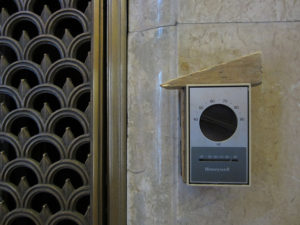 Growing up in the Caribbean I was used to only two types of weather patterns: rainy season and dry season. Where I grew up the average annual temperature was 80 degrees. In the Caribbean, we only paid attention to the thermometer, which served to tell us the temperature at any given time.
Growing up in the Caribbean I was used to only two types of weather patterns: rainy season and dry season. Where I grew up the average annual temperature was 80 degrees. In the Caribbean, we only paid attention to the thermometer, which served to tell us the temperature at any given time.
I don’t think I even heard about or knew what a thermostat was until I came to the Unite States in the mid-1980s. For most people in the Caribbean, we only need to know what the temperature is so we can dress appropriately. We had no use for a thermostat because few of us had air-conditioning–and certainly no heating–in our homes.
When I came to the U.S., I was introduced to the thermostat as the instrument that controls the temperature in the room. I learned that the thermometer only measures the temperature, while the thermostat regulates the temperature by making small adjustments to heat or cool.
As we know, a thermostat sets the temperature in a room while a thermometer merely measures it. A thermostat is active, a thermometer passive. The former drives positive change while the latter simply records it.
I find the same concept of thermometer and thermostat at work in the way some leaders lead. They are either a thermometer, only taking the temperature of the people, but unwilling to be a thermostat to effect necessary changes.
Some leaders are good at reading their people and can tell when things are going well or not. The thermometer approach to leading is not difficult because anyone can see when an organization is facing challenges and difficulties.
However, the leader who takes the thermostat approach is the one who can bring about the positive change necessary to keep the organization moving forward to achieve its goals.
Think about the great leaders you have known, those who attract or inspire you. You likely will discover that a characteristic that makes them stand out is their thermostat approach to leadership. They make (or made) things happen where others do (did) not think it possible.
Whoever might come to mind, we would probably all agree that these individuals were thermostats within their spheres of influence and responsibility. They all created a climate that inspired us and others to thrive.
Being a thermostat leader is not easy because it often requires courage and a lot of self-confidence to set the direction of the organization while sometimes facing great internal opposition.
A leader needs to have the ability to both take the temperature and change the temperature. The best of leaders operate more in the thermostat mode, having the capacity to change the temperature in the room. It is the leader’s responsibility to set the temperature of the organization. Jason Barger made the following observation regarding the leader as the thermostat:
They are very clear what temperature they are trying to set. They intentionally take time to make sure all on their team understand what type of culture they are trying to create. They are precise with their language, they communicate consistently, and they coach others to understand what temperature they are striving to achieve every day.
Are you a thermostat or a thermometer? How would those you are leading describe you? Maybe it’s time for you to start adjusting the temperature in the direction you know God wants it to go.
If you would like help in achieving your goals in any area of your life, call us at 208-880-0307 or email us at errol@errolcarrim.com to schedule a complimentary coaching session. To read Errol’s other posts, visit Christ-Centered Life Coaching.
